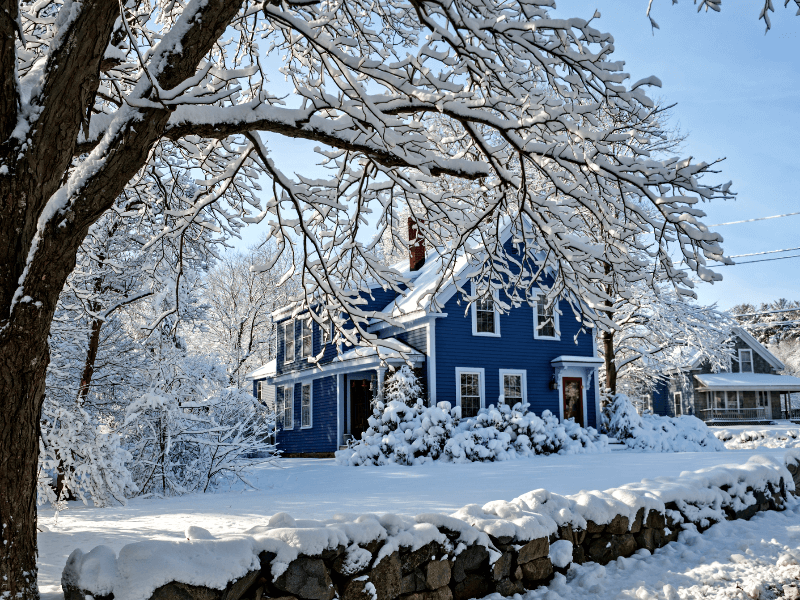
New England winters can be hard on your home, start your winter home maintenance now.
by Carrie Travis, VP and Project Coordinator, GMT Home Designs
Nowadays, New England winter isn't always the season-long deep freeze we all experienced growing up.
Still, temperatures are falling along with the leaves, and we can expect the mix of cold weather, storms (frozen or not), rapid temperature changes, and other weather-related events that give local homes a beating each winter.
So it's a great time to take a few steps that will protect your home — and keep your energy bills lower too. We've written a lot about these subjects over the years; here's a roundup of practical advice for New England homeowners.
From 5 Ways to Save Energy in Your Home this Winter:
- Change your air filter
- Tune up your HVAC equipment each year
- Install a programmable thermostat
- Seal your heating and cooling ducts
- Switch from regular window screens to storm windows for extra insulation
From Winter is Coming:
#WinterReady on ready.gov offers lots of winter preparedness and safety tips, for your home, car, and more. Here's a sample:
- Have your chimney inspected and cleaned every fall
- If you use a space heater, make sure the cord is undamaged, plug only directly into a wall outlet (no extension cords), and keep it 3 feet away from anything flammable
- Keep window coverings like blinds or curtains open during the day to take advantage of the sun’s heat in the winter – especially windows that get direct sunlight. Close them at night to keep heat from escaping.
- Make sure your vehicle is in good working condition before you travel.
- Keep your gas tank as full as you can. A full tank will also keep the fuel line from freezing.
From 5 tips for preventing water damage to your home:
- Keep your gutters and downspouts clear
- Increase the number of downspouts
- Use downspout extensions
- Install a french drain to move water away from the house
- Install a modern sump pump in poorly drained basement
From Ice, ice, baby: Finding and fixing winter damage:
- Set a reminder in your calendar now, to check around the home in the spring!
- Ice dams
There's lots more advice and practicals in the linked blog posts!
From Resilient Design: What does it mean for you?
Thinking longer-term, resilient home design is a growing trend in architecture, with principles aimed at making homes better able to withstand events large (like an earthquake or hurricane) and small (such as branches or debris falling on a roof during a microburst).
Every house is different, but here is food for thought. Some of these ideas are easy to adopt immediately, while others might be considered as part of a remodeling or addition you're planning for the future:
- Roof materials like standing seam metal roofing to shed snow
- Secondary heating systems like wood stoves
- Insulation strategies which include foundation walls, above-grade walls, ceilings, roofs and basements.
- Redundant or back-up energy systems
- Windows that can withstand hurricanes
- Roofs that can withstand impacts
- Other materials selection—for example concrete and steel in building where appropriate for strength, durability and reduced combustibility, and resistance to decomposition
- Interior finish materials that can dry out if they get wet, instead of requiring replacement
- Products that do not leach toxins or off-gas in the event of fire or flooding
- Specialty storage areas for non-perishable food and safety supplies to be maintained on premises
- Redundant water sources
- Seismic retrofitting
We take resilience into consideration in every one of our design projects.
